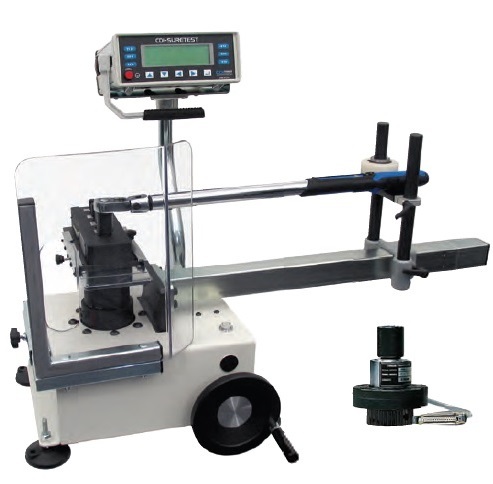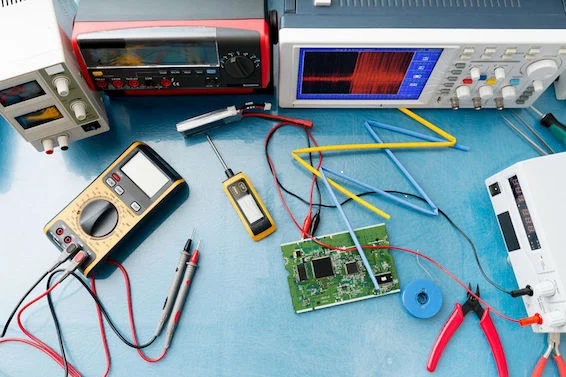CALIBRATION OF EQUIPMENT
Calibration is vitally important wherever measurements are important, it enables
users and businesses to have confidence in the results that they monitor, record
and subsequently control.
Calibration is the process of comparing a reading on one piece of equipment or
system, with another piece of equipment that has been calibrated and referenced
to a known set of parameters. The equipment used as a reference should itself
be directly traceable to equipment that is calibrated according to ISO/IEC 17025.
ISO/IEC 17025 is the International Standard for the accreditation of Testing and
Calibration Laboratories. It includes quality management system requirements
along with technical requirements.
Calibration defines the accuracy and quality of measurements recorded using a piece of equipment. Over time there is a tendency for results and accuracy to ‘drift’ when using particular technologies or measuring particular parameters such as temperature and humidity. To be confident in the results being measured, there is an ongoing need to maintain the calibration of equipment throughout its lifetime for reliable, accurate and repeatable measurements.


The goal of calibration
The goal of calibration is to minimize any measurement uncertainty by ensuring the accuracy of test equipment. Calibration quantifies and controls errors or uncertainties within measurement processes to an acceptable level. In manufacturing process applications, any equipment used should be calibrated at multiple points across its working range to ensure reliable information to critical alarms and systems. Failure to calibrate or improper calibration has been the cause of injury, death and even major environmental disasters. Over time, any measuring device’s accuracy will begin to decline. Usually, this decreased accuracy is due to standard wear on various components, but it can also occur due to a harmful environment or mechanical or electric shocks. The rate at which measuring equipment ill lessen can vary based on its surroundings and type. Due to this reduction in measuring accuracy, organizations with measuring equipment prioritize regular calibration. Calibrating equipment, ensure it has the precision required to complete tasks correctly. Calibrating measuring devices also ensures to maintain a high level of product quality.
BENEFITS OF CALIBRATED EQUIPMENT
When a company calibrates its equipment, it can receive several benefits. Some
of these advantages include
Any measuring device will wear down over time. Instead of throwing out the device and replacing it with a new one once it stops providing accurate measurements, it can be calibrated it to get it back to normal levels. After calibration the existing equipment, it should perform at its original standard. As a result, it can keep using a device for a lot longer. Calibration can also help to pay attention to how fast a piece of equipment degrades, helping to keep an eye on factors – such as environment pressures or particular applications – that lead to more wear. With this information, it can make adjustments to prevent faster wear and keep the instruments in better condition longer. your instruments in better condition longer.
When use the calibration equipment for essential processes, safety is paramount. Even minor inaccuracies could cause a machine to work incorrectly or give false information about how safe something is, leading to injuries or machinery breaking down. Regularly calibrating the equipment allows to have accurate measurements and avoid unsafe situations. Since calibration increase safety, industries use it to keep their assets and staff protected.
Since calibrated equipment prevents accuracy errors, it helps manufactures limit mistakes during the production process that could lead to unusable products, in this way it can save a great deal of money, when use the calibrated equipment on recommended schedules. Similarly, inaccurate food temperature measurements could spoil products. In research laboratory, inaccuracy could end up giving incorrect readouts, rendering any results meaningless. Whatever the industry, errors eventually raise the costs.
allows to save money, as won’t waste funds throwing away faulty products or spending more on staff costs when those have to redo tests in a laboratory. It will also save money and raise revenue, as it will reduce expenses related to having to stop processes and restart them once the inaccuracies discovered. By reducing error, the organization process could be better streamlined and ensure to get maximum value out of the equipment.
Many industries require companies to have relevant certifications to operate legal. Before doing particular tasks, it will likely need verification from a regulatory body. Often, these certifications demand proof the calibration of equipment and are trustworthy enough to produce accurate results. If regularly calibrate the equipment, it can be more easily received certification from relevant regulatory bodies. Calibration allows the equipment to deliver precise results, helping to pass any certification tests concerning the devices accuracy.

